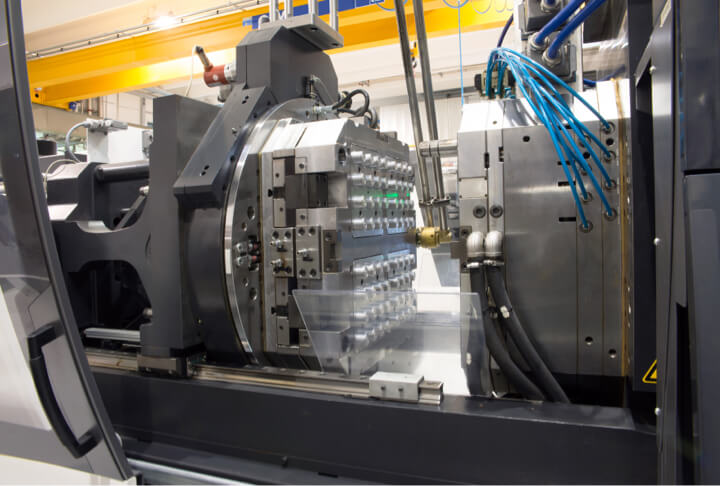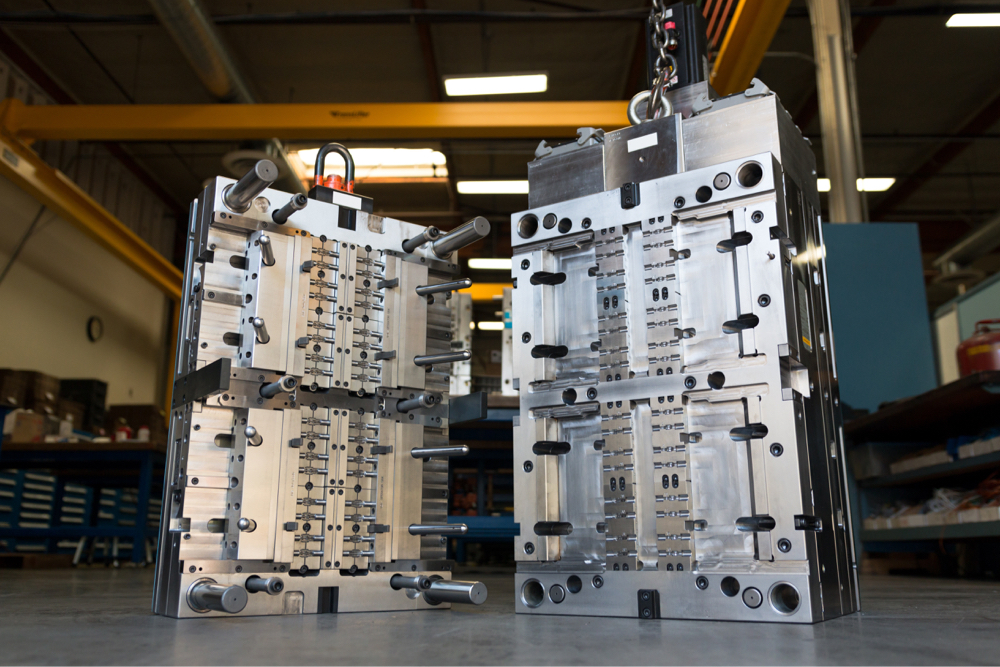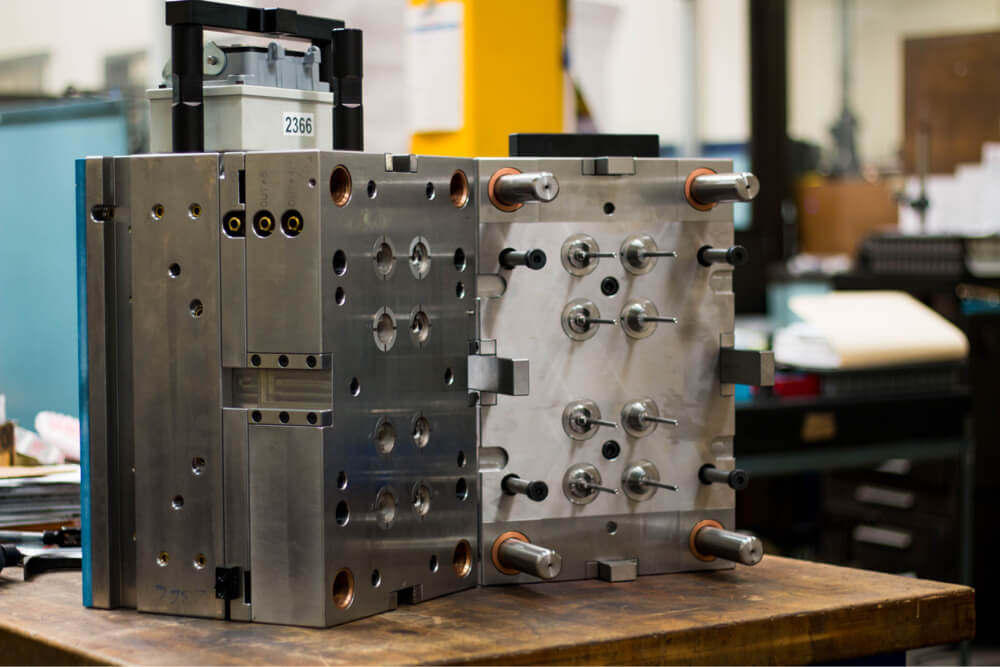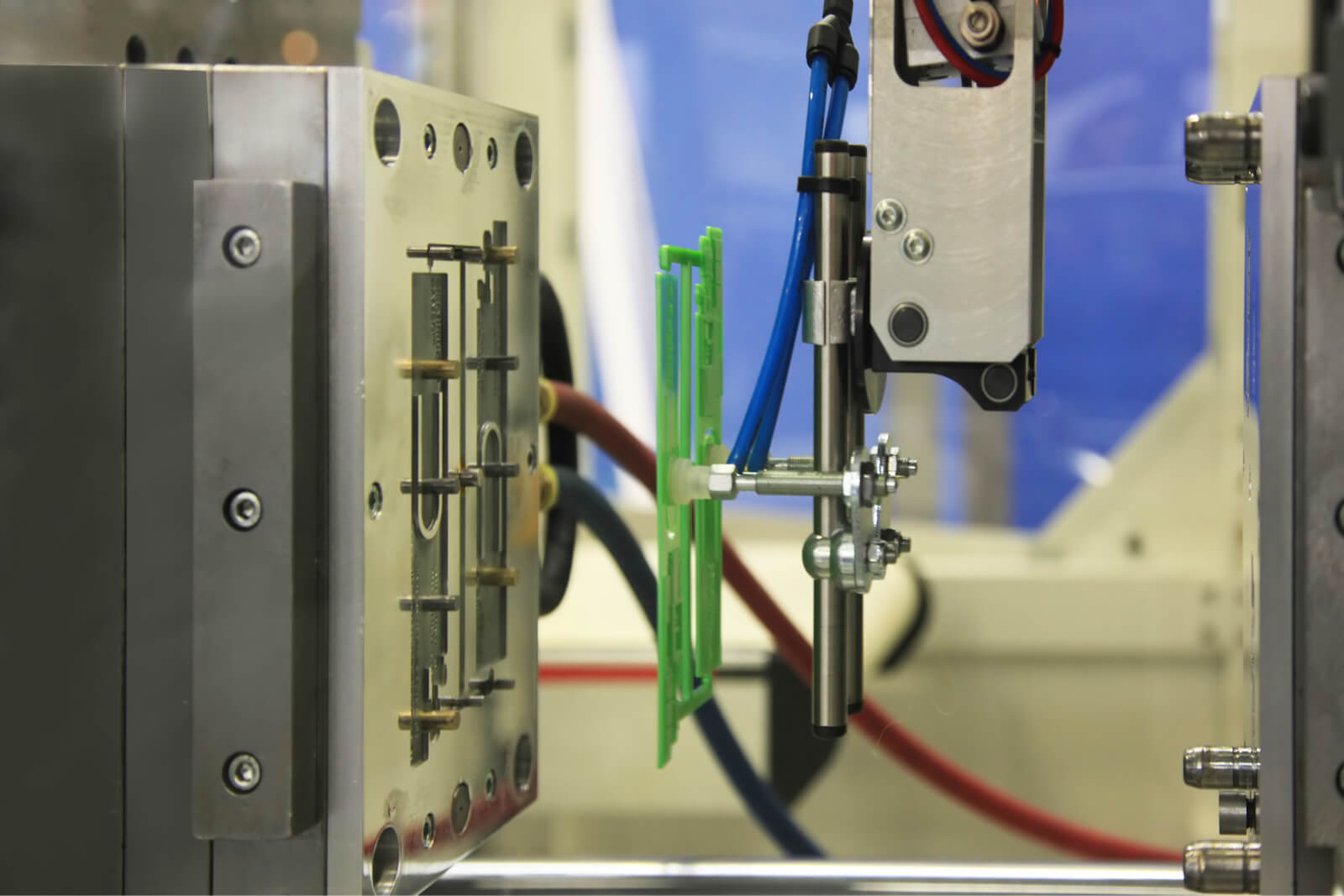Time to read: 5 min
Injection molding gates are openings in molds that allow molten plastic to enter the cavity while controlling the direction and volume of flow. This molten plastic fills the cavity and then cools and hardens into a molded part. Gating can be large or small, but it’s usually tapered down to the orifice to avoid flow restrictions. Gate locations and styles vary, but they all produce parts that require trimming because, inevitably, molten plastic solidifies at the gate and protrudes from the part’s surface.
Gate design is related to mold design, and gate characteristics affect tooling costs, cycle times, and part quality. Fictiv can help you to optimize gate dimensions, placement, and minimize trimming thanks to our deep injection molding expertise. We can also help you to choose the optimal gate types for your project. By understanding the pros and cons of various gating specifications, you can ensure your plastics project will succeed — whether it’s for prototyping, low-volume production, or high-volume manufacturing.

Larger Gates vs. Smaller Gates
Gates can be larger (wider and deeper) or smaller (thinner and shallower) to meet your application’s requirements. In general, optimal gate width is based on the volume of the mold cavity and optimal gate depth is based on nominal wall size. Because different materials have different flow rates, however, the type of plastic is also a factor. For example, because polyethylene (PE) and polypropylene (PP) flow readily, gate depths may be based on only 50% of the part wall thickness.
In general, gates always need to be large enough to support the complete filling of the mold cavity, yet small enough to support gate freeze when the packing phase of the injection molding cycle is complete. Gate freeze isolates the molded part from the system that feeds the molten material into the cavity. The injection molding machine then cools this material and begins measuring the next charge. If the cavity wasn’t filled completely, however, the molded part may need to be scrapped. Larger gates are used with thick-walled plastic parts that need a higher volume of material flow. If the gate is too large, however, the molten plastic may fill the cavity unevenly and cause defects such as shrinking and weld lines. Smaller gates are used with smaller or thinner parts, but gates that are too small can result in short shots and incomplete filling of the mold cavity. Using a small plastic gate to fill the cavity for a large part can create excessive shear heating and cause resin degradation.

Parting Lines vs. Other Gate Locations
Injection molding gates can be placed along the mold’s parting line or at various points along the mold’s cavity. Parting line placement is typical but it’s not required. For example, some gates are located at the top of the part while other gates are found on the B-side of the mold where the ejector pins are located. In general, gates are placed away from pins and cores since these obstructions can cause molten plastic to flow around them and form weld marks. Gate type also determines the optimal gate location.
Best practices for plastic gates are critical to promote complete filling of the mold cavity, so locate the injection molding gate closest to where the part wall is the thickest. It’s also important to avoid placing a gate where it could interfere with the opening of the mold during part ejection. Because gates may leave blemishes, these openings are often placed away from visible part surfaces. The incorrect placement of gates can also cause problems like material shearing and uneven part thicknesses.

Manual Trimming vs. Automatic Trimming
Trimming or de-gating removes the plastic material that solidifies at the injection molding gate. This process can be manual or automatic, and there are pros and cons to each approach. For example, manual trimming requires a worker to separate molded parts from the runners after each cycle. This increases labor costs and may result in inconsistent cycle times. Manual trimming reduces the risk of shearing, however, and that’s important if a molded part has features that could break off during ejection.
The main advantage of automatic trimming is that it does not require human intervention. This reduces labor costs, especially across higher part volumes, and ensures more consistent cycle times. The automatic shearing of excess gate material can damage delicate parts, however, and the cost savings at lower volumes of parts may not be especially significant. Also, some types of injection molding gates do not support automatic trimming, so manual de-gating is required.
Manual Trim Gates
The following types of injection molding gates require manual trimming.
- Direct gates (direct sprue gates) are used for large, cylindrical parts. A sprue feeds the molten plastic material directly into the mold cavity.
- Disc gates (diaphragm gates) are used for round or cylindrical parts that need to be concentric. Typically, these injection molding gates are challenging to remove and trim.
- Edge gates (standard gates) are recommended for flat parts. The gate’s cross-section is rectangular and can be tapered between the molded part and the runner.
- Fan gates have a wide opening with a variable thickness. They permit the rapid filling of large parts and support fragile mold sections.
- Ring gates allow the plastic material to flow freely before moving into a uniform, tube-like extension for mold filling.
- Spoke gates are round gates with a cross in the middle. They’re used to produce tubular parts, but perfect concentricity is hard to achieve.
- Tab gates are for flat, thin parts that require low shear stresses. Their tab-like feature confines these stresses to the gate area.

Automatic Trim Gates
The following types of injection molding gates require automatic trimming.
- Pin gates are used with fast-flowing resins or when a part’s cosmetic appearance is important. Typically, they are used with molded parts that cannot have vestiges along the parting line.
- Submarine gates (sub gates) have a tapered channel and can help hide gate blemishes. These openings are sometimes called tunnel gates, cashew gates, or banana gates instead.
- Thermal gates (hot tip gates, hot runner valve gates) support conical or round shapes that require uniform flow into the mold cavity. They are used in hot runner systems that keep the plastic in a molten state until it enters the cavity.
Additional Injection Molding Gate Considerations
There’s a lot to consider when it comes to injection molding gates, but making the right decisions leads to lower tooling costs, faster cycle times, and greater part quality. Fictiv is your operating system for custom manufacturing that makes injection molding part procurement faster, easier, and more efficient. Our injection molding experts can help you to optimize gating and provide the design for manufacturing (DFM) assistance you need for medical injection molding and other types of projects. In the end, Fictiv lets engineers, like you, engineer — instead of sourcing, vetting, onboarding and managing suppliers. To get a quote and get to work, create an account and upload your design today!








